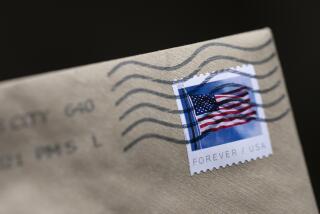Joining a Purchasing Group Can Provide Strength in Numbers
Want to make your liability insurer happy? Join a purchasing group.
Federal law allows businesses engaged in similar activities to band together in purchasing groups to negotiate special deals with insurers for liability coverage. Business owners who join these groups can do good things for their balance sheets, not to mention their peace of mind.
Believe it or not, insurers like purchasing groups too. Insurers are at a disadvantage in the relationship between buyer and seller: They’re competing so hard for premium dollars that they sometimes “buy” business with lower premiums that don’t reflect the risk they’re taking on.
Worse, some insurers hedge their bets by lacing their policies with so many exclusions that the coverage resembles Swiss cheese--full of holes.
Nobody wins that way. Although it seems counterintuitive, purchasing groups level the playing field for insurers and customers alike. Insurers compete hard for purchasing-group business, but once they book it, they have customers they understand and business they can count on, isolated from competition in the overall marketplace.
Likewise, purchasing groups can enable businesses to procure liability coverage reflecting the risks they actually face--at premiums below those for similar coverage on the open market.
How much can be saved? It’s hard to say because of the erratic pricing in the open market. But purchasing groups wouldn’t exist, much less grow, if they didn’t make economic sense, says Karen Cutts of Pasadena, an attorney with expertise in purchasing groups (and their siblings, risk-retention groups, which do for big businesses what purchasing groups do for small).
*
Cutts publishes the Risk Retention Reporter, a monthly newsletter. According to the publication, there are 620 purchasing groups operating nationwide, including 111 formed last year alone. Purchasing groups probably account for $2 billion in liability insurance premiums a year, Cutts says.
Groups exist for contractors, developers, truckers, property owners and managers, dentists, restaurants and bars, travel agents, auto dealers, manufacturers and distributors, wholesalers and retailers, lawyers, accountants, architects, engineers and many other businesses. Even insurance agents buy liability coverage through purchasing groups.
What’s more, Cutts says, purchasing groups get coverage for a wide variety of third-party risks, including general, umbrella, professional, employment practices and commercial auto liability; errors and omissions coverage; directors and officers liability; and medical malpractice.
“People join purchasing groups in part to save money on premiums and in part to get coverage that really meets the need,” Cutts says.
“A purchasing group gives you broader coverage tailor-made to the actual needs of the group. The insurer passes on savings because of the group buying mechanism.”
Good liability insurance affects your balance sheet three ways:
* It isolates the assets of your business from the risk that someone will sue you and win big--protecting you from an increasing tendency among juries to hit businesses with big liability penalties.
* Purchasing groups often negotiate multiyear coverage at guaranteed premiums, so you know what your coverage will cost in the future. What’s more, the insurers writing this kind of coverage often reduce premiums for individual businesses with good loss records. So you save money two ways--through low upfront premiums and through dividends or credits against subsequent-year premiums reflecting your own loss record.
* Over the long term, the coverage you buy through a purchasing group isolates you from turmoil in the insurance marketplace. Strong purchasing groups lessen broad fluctuations in pricing because they give insurers predictable risks--the key to fair pricing.
*
You gain other benefits too. A profitable purchasing-group account allows an insurer to tailor risk-management and claims programs to suit the needs of your group. So:
* You get a partner--your insurer--with real expertise in managing the risks faced by people in your industry.
* Similarly, when you file a claim, you deal with someone who understands your business.
As you might expect, trade associations oversee many purchasing groups, so they are among the first places to check if you want to buy through a group.
But not every trade association runs a group. If yours doesn’t, ask your broker to look into putting one together under the auspices of your association.
Your broker can learn more about purchasing groups in Cutts’ newsletter, available in many insurance offices. Cutts’ company, Insurance Communications, (818) 796-4972, also maintains a Web site with information on purchasing groups (https://www.rrr.com) and has published two guides on the subject: “Purchasing Group Users’ Handbook” ($540) and “A Practical Guide to Purchasing Groups” ($495). Cutts updates the books quarterly.
Setting up a purchasing group takes some work, but Cutts said she expects the number of groups to grow.
“Purchasing groups are an ideal way for businesses to group together to create what is, in effect, a critical premium mass very attractive to insurers looking for economies of scale,” Cutts says.
“Coverage on the open market . . . is much more expensive--and you get less coverage for your money. The purchasing group benefits all the parties involved in the insurance transaction.”
More to Read
Inside the business of entertainment
The Wide Shot brings you news, analysis and insights on everything from streaming wars to production — and what it all means for the future.
You may occasionally receive promotional content from the Los Angeles Times.








